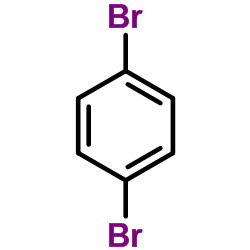Isolation of a novel metabolizing system enriched in phase-II enzymes for short-term genotoxicity bioassays.
M Paolini, L Pozzetti, P Silingardi, C Della Croce, G Bronzetti, G Cantelli-Forti
文献索引:Mutat. Res. 413(3) , 205-17, (1998)
全文:HTML全文
摘要
Murine S9 liver fractions isolated from mice fed 7.5 g kg-1 2(3)-tert-Butyl-4-hydroxyanisole (BHA) for 3 weeks were tested to determine: (a) the profile of both phase-I and phase-II xenobiotic metabolizing enzymes; (b) their ability to induce in vitro covalent binding of some precarcinogens to calf thymus DNA; and (c) their activation in a standard genetic toxicology assay. With regard to phase-I pathway, the S9 fraction expressed various cytochrome P-450-(CYP) (classes 1A1, 1A2, 2B1, 2E1, and 3A)-dependent biotransformation enzymes at levels comparable with those present in murine control liver. For post-oxidative enzymes, the S9 expressed high levels of glutathione S-transferases (up to 12-fold increase), glutathione S-epoxide-transferase (up to 2.6-fold), UDP-glucuronosyl transferase (up to 5.3-fold) and epoxide hydrolase (up to 2.6-fold) activities, as compared to untreated mice. The in vitro DNA binding of the precarcinogenic agents [14C]-1,4-dichlorobenzene, [14C]-1,2-dichlorobenzene and [14C]-1,4-dibromobenzene, mediated by BHA-induced cytosol and/or microsomal preparation, showed an increase in specific activity comparable to that observed with phase-I (PB/beta NF) induced S9. In some instances, covalent binding was even more elevated using the BHA-induced systems as compared with traditional S9 fractions. For example, cytosol derived from BHA-administered mice was able to induce a significant binding to calf thymus DNA up to 26.2-fold increase for [14C]-1,4-dichlorobenzene, while cytosol from PB/beta NF was not. A high mutagenic response on diploid D7 strain of Saccharomyces cerevisiae as exemplified by a marked induction of mitotic gene conversion and point (reverse) mutation confirmed that BHA-derived S9 fractions activate precarcinogens to final genotoxins. Because a number of chemicals are activated by either oxidative or post-oxidative enzymes, the use of metabolizing biosystems, with an enhanced phase-II pathway, together with classical S9 fractions, can improve the sensitivity of the assay in detecting unknown genotoxins.
相关化合物
| 结构式 | 名称/CAS号 | 分子式 | 全部文献 |
|---|---|---|---|
 |
对二溴苯
CAS:106-37-6 |
C6H4Br2 |
|
Convenient QSAR model for predicting the complexation of str...
2009-01-01 [Bioorg. Med. Chem. 17 , 896-904, (2009)] |
|
QSPR modeling of octanol/water partition coefficient for vit...
2008-04-01 [Eur. J. Med. Chem. 43 , 714-40, (2008)] |
|
Photon upconversion and photocurrent generation via self-ass...
2015-11-19 [J. Phys. Chem. Lett. 6 , 4510-7, (2015)] |
|
Quantitative structure-activity relationship analysis of inh...
2005-01-27 [J. Med. Chem. 48 , 440-9, (2005)] |
|
Exploring QSAR and QAAR for inhibitors of cytochrome P450 2A...
2009-01-01 [Eur. J. Med. Chem. 44 , 1941-51, (2009)] |